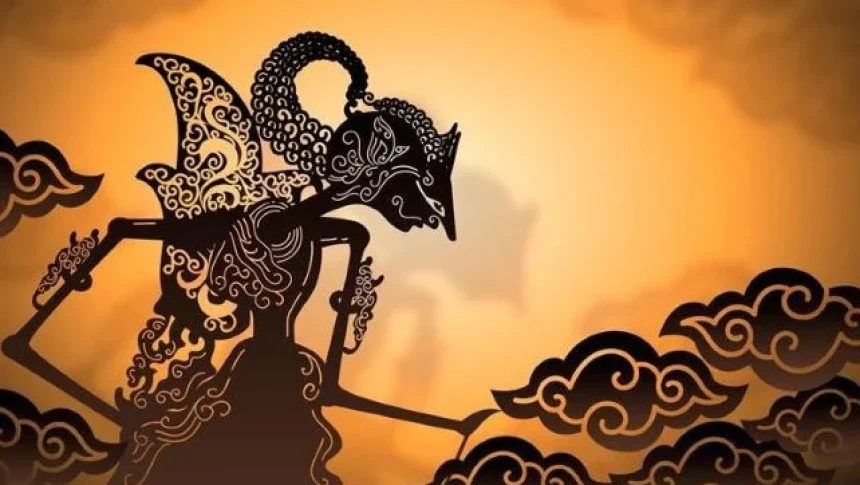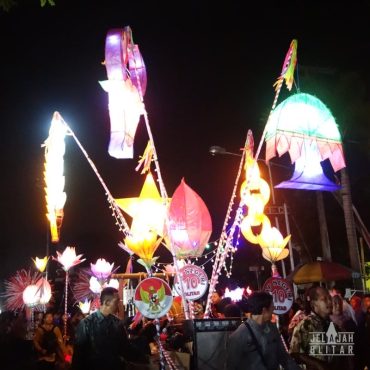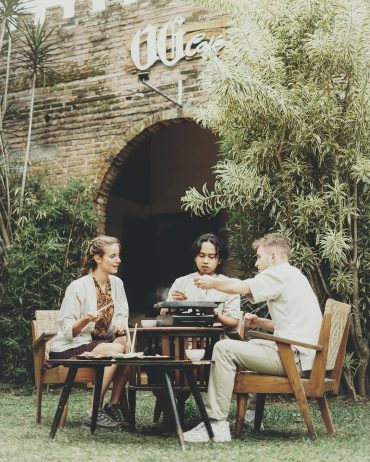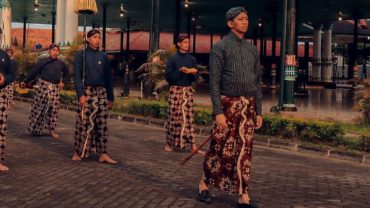In the midst of technological development, puppetry still plays an important role, especially in instilling character values to the younger generation.
For example, in the Blitar region, wayang preservation artists continue to revive this art.
Although faced with various challenges, awareness about the preservation of justified traditions must be strengthened so that this cultural wealth continues to live in the modern era.
One of the innovations in the world of puppetry is Wayang WaliIt was developed by Ki Sudrun from Blitar Regency.
Wayang Wali has unique characteristics that distinguish it from other types of puppets. Firstly, the name of this puppet is different from the others.
Secondly, the materials used to make these puppets can be leather or wood (as in wayang golek) with different story characters.
Thirdly, the stories performed do not always follow traditional conventions, such as in the performance titled "Without a Play".
Fourth, the songs sung in Wayang Wali are not limited to Javanese songs, but also include Islamic songs that contain praise and prayers to God.
Fifth, the musical instruments used to accompany the performance consist of a combination of Javanese gamelan, modern musical instruments such as guitars, keyboards and drums, and flying.
The physical characteristics of Wayang Wali with the title "Without Lakon" can be seen from the material, colour, appearance, and the relationship between the appearance of the puppet and the character it represents.
Wayang Wali is made of leather and wood, and the leather puppets are made by Pak Djoko, a puppet craftsman who is able to realise Ki Sudrun's ideas.
Preparation for a performance usually begins four months in advance, during which Ki Sudrun writes down the theme and storyline.
Each colour in Wayang Wali has its own meaning. Red symbolises passion, white symbolises wisdom, yellow symbolises tranquillity, and black is used as a symbol of virility or ferocity.
In the performance, red is used for antagonists such as yaksas, giants, animals, demons, and villains, while yellow, white, and brown are used for protagonists such as punokawan, sunan, raden, kyai, and commoners.
The colour combination of yellow and red is often used to represent characters such as pimps, prostitutes, and officials who have been caught in cases.
In Wayang Wali performances, three forms of gunungan are used: calligraphic gunungan, hole gunungan, and pasujudan gunungan.
The calligraphic gunungan contains calligraphic ornaments with the sentence of shahada, the pasujudan gunungan depicts the awareness of surrendering to God when facing trials, often played with a gunungan of holes on top to symbolise the world.
The mandate in Wayang Wali contains many moral teachings and values of good and bad behaviour according to Islamic teachings and Javanese philosophy.
Ki Sudrun uses wayang as a medium for da'wah, still contributing to culture.
The mandate in the performance "Without Lakon" includes: (a) humans are born with creation, taste, and karsa, so they must have commendable traits in order to enter heaven and be kept away from hell, (b) every child must respect the mother, (c) humans are expected to organise life according to good morals, manners, and norms to balance inner and outer affairs, (d) humans must unite even though they have different interests, and (e) humans should try and not just surrender to nature.
These mandates are reflected in various events in the story, such as Raden Said and Brandal Lokajaya's search for palm trees and kolang-kaling, and Semar's advice to Bagong, Petruk and Gareng.
Based on this, it can be concluded that in the wayang wali story "Without Lakon", the theme is warfare, but not in the physical sense.
The battle that is the focus of Wayang Wali is the inner war of man against his lust to return to the teachings of Allah. This reflects the acculturation between Javanese culture and Islamic culture.
Javanese cultural elements are retained with the theme of warfare, but combined with Islamic values, namely the war against lust.
In the Javanese spiritual view, humans have four passions: anger, luamah, supiyah and mutmainah.
In wayang stories, certain characters reflect these traits.
Acculturation with Islam is seen in how all these passions are directed to return to the teachings of Allah.
In addition to wayang wali, the acculturation of Islam with Javanese culture can also be seen in the tradition of kenduri (feasting) at the event Manten Kopi Tradition which is held annually at De Karanganjar Koffieplantage as a sign that the harvest season has arrived.
The kenduri tradition is usually led by traditional leaders or community leaders in the neighbourhood.
In kenduri, the main dish is usually tumpeng complete with side dishes.
This food is then distributed to the attendees as an expression of gratitude to God Almighty and to maintain the relationship between community members.
Kenduri also functions as a social mechanism to maintain integrity and reaffirm shared ideals and goals.







